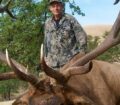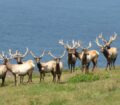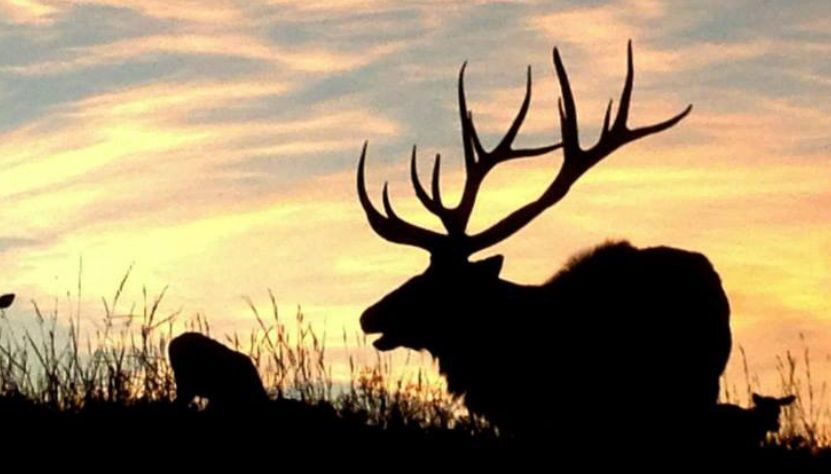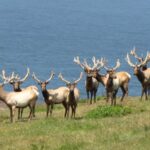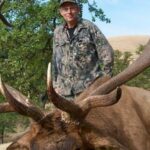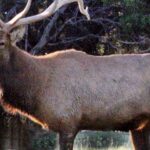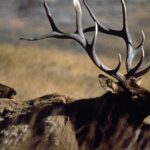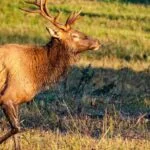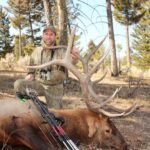Editor’s Note: In the turkey-hunting fraternity, one of the toughest turkeys to take in the Continental U.S. is the Osceola gobbler. Actually hunting the Osceola isn’t any different from hunting any other turkey; however, the area where he lives in Florida is very small. Although, there’s some public hunting for the Osceola, it’s fairly well restricted. The same is true about the Roosevelt elk and even more so the Tule elk. California is the only state that has both the Roosevelt and the Tule, as well as the Rocky Mountain elk. JITW wanted to take a closer look at these far western elk, and what’s required to take them.
So, we talked to Parrey Cremeans, a hunting guide from northern California, who has been hunting and guiding in the far west since 1988. His guiding service is called Just For Hunting, and his phone number is: 650-888-0808. He’s taken several elk and called in many more for his clients, besides guiding for black-tailed deer, mule deer, antelope, turkeys (Rio Grande and Merriam’s gobblers), bear, black bears and hogs. Or, to learn more about hunting elk specifically, you can find more information here. If you’re interested in hunting any one of these three elk subspecies, you need to book a hunt about two years in advance or even earlier than that. Here’s a map of California’s Elk Hunt Zones.
To the east of where I live in Redding, California, there’s an isolated herd of Rocky Mountain elk that have been in the area since 1914. They were brought there by rail car from Gardiner, Montana. Originally, they were released around a town called Winthrop, California, but in 1940, when Shasta Lake was built, that town vanished under the water. Those elk there moved into the mountains as the lake was flooded. There were about 30 to 35 elk released in this area, but the first time the region had a legal elk-hunting season for this herd of elk wasn’t until 2011. I started hunting them in 2011 on a private-land program. This herd probably only has about 300-400 animals in it, and they stay in about a 35-square mile radius. They mostly live on private-land ranches and move from ranch to ranch.
We usually hunt those elk on private-land management tags or landowner tags, if we draw them. If we have a hunter who draws one and wants us to guide him on this herd of elk, the hunter typically has a fairly-good chance of taking a Rocky Mountain bull that will score from about 330 inches to about 365 inches, which is a really-nice bull. Be sure to inquire about the cost of a 5-7-day guided hunt. The good news about drawing landowner and private- land management tags on the ranches where we hunt is that these elk don’t get much hunting pressure. They’re also very susceptible to calling.
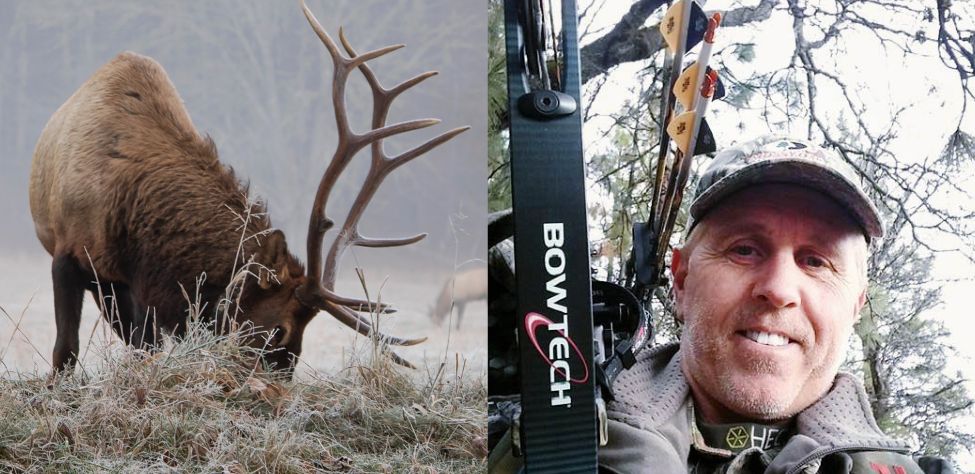
Once, I guided a fellow who drew one of these tags on a ranch we hunt. He was 72 and in really- good shape. He told me he wanted to take a bull that would score about 350. On the first morning we went out, we saw a bull down below us, as we were driving to the place where I wanted to start hunting. But he was an immature bull, so we didn’t go after him. As we continued to drive up the mountain, we spotted another bull that looked pretty good. We circled around him to get the wind in our favor, and I set my hunter up out in front of me. When he was set, and I was set, I bugled. That bull fired out a bugle right behind my bugle. We’d only been hunting for 35 minutes when suddenly my hunter was looking at two bull elk immediately in front of him. Both bulls were nice, but since he had told me he’d like to take a bull that would score about 350, and I didn’t think either one of them would make that 350-inch mark, we passed on those bulls too.
We hunted for three days after that first morning, and I called in nine bulls. Then we got on a herd that had four bulls in it and managed to get in-between them. We attempted to call a bull earlier that morning close to the herd, but he wouldn’t come. However, when he heard all the bugling going on as we were calling to these four other bulls, the early-morning bull decided he needed to come and get right in the middle of whatever was happening. This bull started moving straight down the mountain, and my hunter made a great shot with his rifle. The bull only went 35 yards before he went down. Since we were on a ranch, I was able to pull up right beside the downed bull with an ATV. Since we had three guys to quarter the bull, we were able to get the bull broken down and quartered, and in a cooler in about 2.5 hours. That bull scored 342.
Looking for more content? Check out our YouTube channel and watch “Eva Shockey Explains Why Someone Like Her Got into Hunting” by John E. Phillips.
Expert Guidebooks on Elk Hunting: Best Sellers
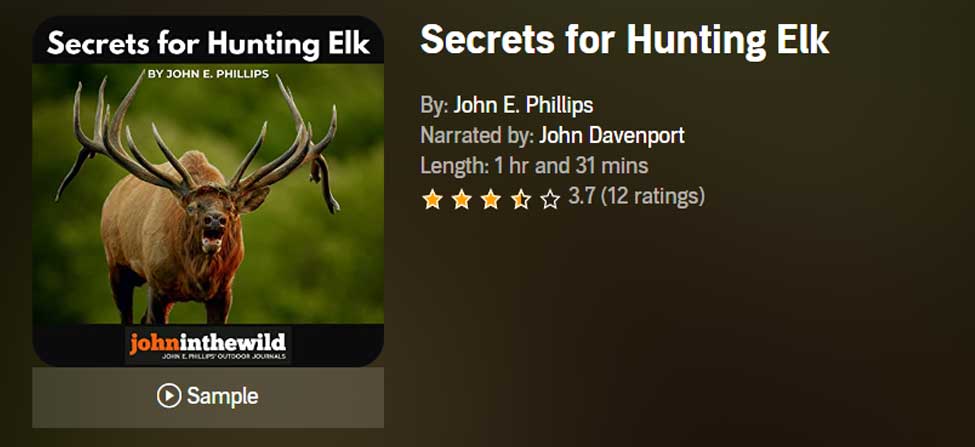
Secrets for Hunting Elk
The quickest, easiest (if there is an easy way), and safest way to find and take that bull elk of a lifetime will be to hunt with a guide.
Chad Schearer, a longtime Montana guide and TV personality, told me, “My hunter is my gun. If I get to the elk, and my hunter isn’t with me, then we don’t take the elk. My job is not only to find the elk but also to help the hunter get to the elk and make the experience as enjoyable as I can for him.” That’s the kind of fella with whom I want to go elk hunting.
An elk hunt can be tough, but it doesn’t have to be so tough that you don’t enjoy it. That’s why this elk hunting book starts with the confessions of an elk guide and with Chad Schearer’s philosophy of what the guide and the hunter’s relationship should be.
A good portion of your success will depend on your physical condition, and Matt Morrett of Harrisburg, Pennsylvania explains how an eastern hunter can get ready physically during June and July to hunt western elk, the animals he describes as, “Like deer or turkeys on steroids.”
Wayne Carlton, well-known elk hunter and TV and video personality from Montrose, Colorado, tells us what types of elk calls to use and what to say to the elk. Mike Miller of Colorado, another elk guide and Mossy Oak video personality, has tactics for the best equipment for bowhunting and gun hunting elk.
You’ll learn helpful strategies and hunting tips in this book, as well as some straightforward hunting methods that will help to make your elk hunt more successful.
“Thanks to the advice in your elk hunting books, I was able to call up a nice 6-point (6X6) bull elk! He was bugling like crazy. I called him in from about a ¼ mile away. Called him into bow range (about 40 yards away). It was a thrill!” ~Rob Brannon
VERSIONS: AUDIBLE & KINDLE
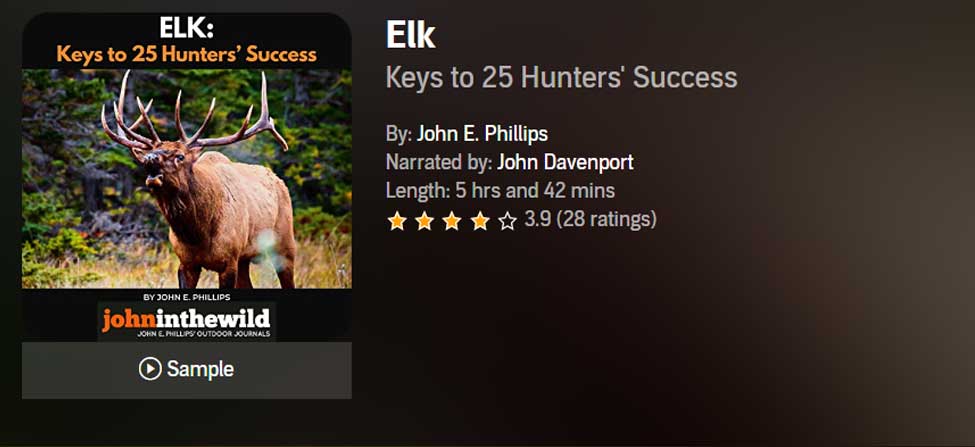
Elk: Keys to 25 Hunters’ Success
Often just one tip or tactic makes the difference in whether you take an elk home to dinner or have to hike back to the truck by yourself. In John E. Phillips’ latest elk book, Elk: Keys to 25 Hunters’ Success, you’ll learn from successful elk hunters the strategies they use to find and take elk.
Many know that the technique that seems to work most often is to hunt where other elk hunters don’t and understand where the elk are before you go on a hunt by studying data from each state, visiting HuntData (see chapter 1), examining maps, and reading postings on elk forums.
This book also tells you how to get ready physically for an elk hunt, including participating in Train to Hunt Competitions, what gear you need to take, how to enjoy a successful do-it-yourself elk hunt, or how to pick the best elk guide for you. You’ll also hear about the X System and the Broken Y System of hunting elk.
Although no one person has all the answers on how to help you find and take your elk, I’m convinced that this book’s outdoors men and women will teach you how to have satisfying elk hunts.
As my friend Karl Badger once told me, “Elk hunting doesn’t get any better than when I ride horses into the high backcountry, see two grizzly bears, hear a pack of wolves howl close to camp all night long, eat plenty of delicious food prepared on a fire and enjoy the company of good friends.”
VERSIONS: AUDIBLE, KINDLE & PRINT
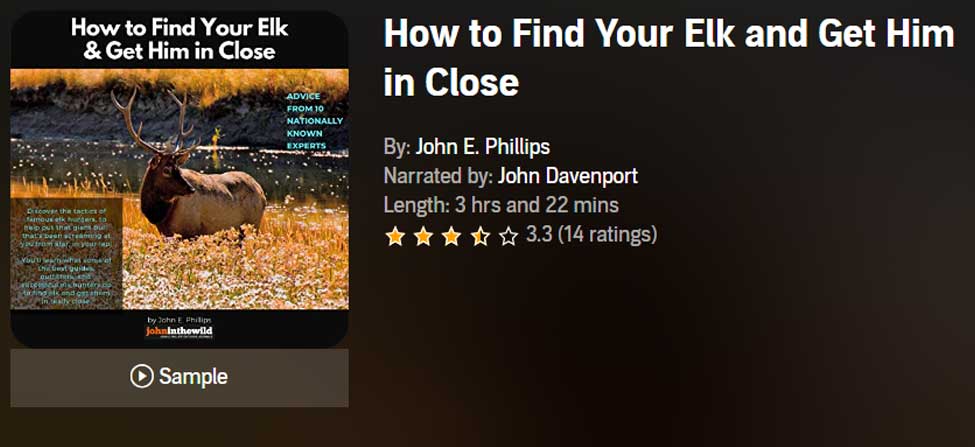
How to Find Your Elk and Get Him in Close will teach you the tactics of 10 nationally known elk hunters, to help put that giant bull that’s been screaming at you from afar, in your lap. You’ll learn what some of the best guides, outfitters, and successful elk hunters do to find elk and get them in really close.
Also in this audiobook, you’ll notice that the majority of the experts call elk to within bow range. We selected numerous bowhunters and bowhunting guides, since the bowhunter has to get much closer to a bull than the gun hunter does – often less than 20 or 30 yards – practically in your lap.
On one elk hunt, I’d heard this bull bugle all morning. My guide had called him within 30 yards, and he was standing just inside black timber. I saw the smoke from his nose wafting out into the icy air less than 30-yards away. All the bull had to do was step out, and I could take the shot with my bow. But then, through no fault of my guide or me, the bull vanished.
The only conclusion I could come up with to understand why the bull I wanted to take with my bow hadn’t stepped out and given me a shot, was because he got raptured. He evidently had left the earth with no trace of himself.
This hunt was when I started wanting to learn more about hunting elk up close. In this book, I’ve tried to find some of the most knowledgeable, experienced, and practical elk hunters. I’ve always found that the best way to learn any outdoor skill, is to either hunt or fish with the best sportsmen in that field.
Often, in elk hunting, that means elk guides, who generally hunt every day of the season and receive a salary for every hunter they guide. So, I’ve put together a group of some of the best elk hunters I know to help us all learn how to find bull elk and get them in close.
VERSIONS: AUDIBLE, KINDLE & PRINT
Tomorrow: Learning Why Tule Are the Toughest Elk

